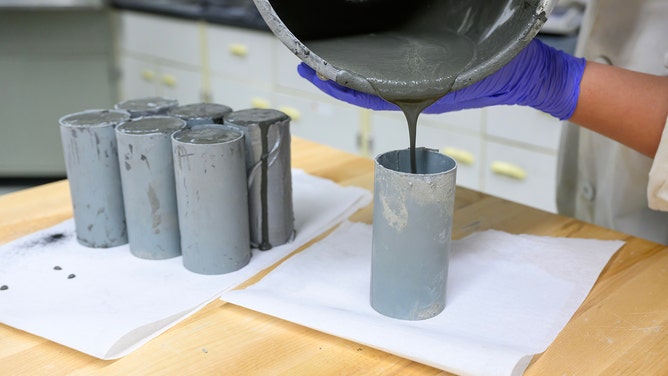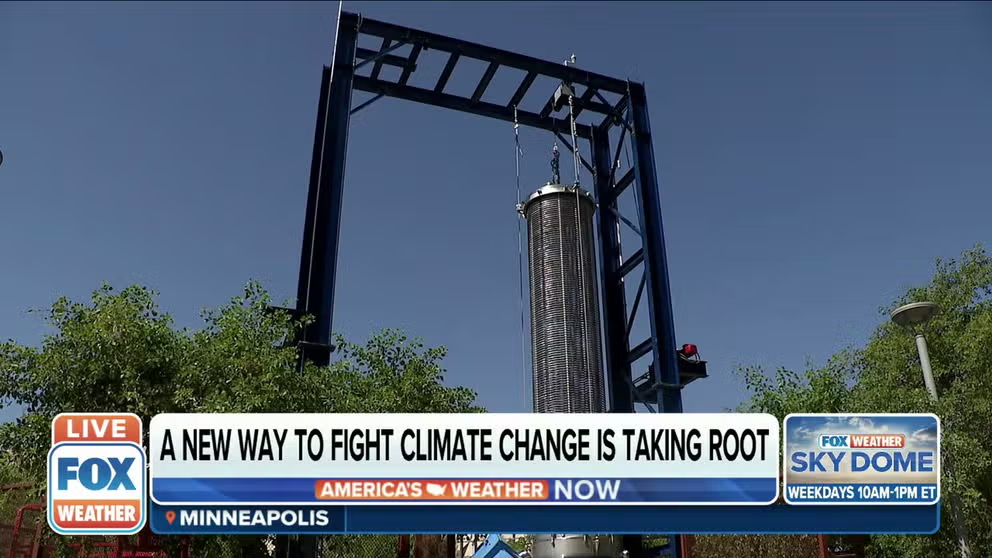'Carbon-negative' concrete invention removes CO2 from the air during manufacture
Researchers at Washington State University say they've developed a 'carbon negative' concrete that removes carbon dioxide from the air during its formation.
MechanicalTree removes harmful CO2 from the atmosphere
FOX Weather correspondent Max Gorden explains the carbon dioxide capture device operating at Arizona State University that works to improve the environment.
PULLMAN, Wash. -- What if the billions of tons of concrete poured around the globe each year could also help battle climate change emissions at the same time?
Researchers at Washington State University say they've developed an environmentally friendly way of creating ‘carbon-negative' concrete that removes carbon dioxide from the air.
Ordinarily, concrete requires high temperatures and combustion of fuels, and limestone used as an ingredient produces carbon dioxide as it decomposes. It's estimated the 4 billion tons of concrete manufactured each year around the world is responsible for 8% of humans' annual carbon dioxide output.

WSU researchers show off their new concrete manufacturing invention on the campus of Washington State University Tuesday, April 11, 2023.
(Washington State University / FOX Weather)
But the WSU team has created a formula that uses 30% biochar -- a type of charcoal made from organic waste -- that, when mixed with concrete wastewater, can remove up to 23% of its weight in carbon dioxide from the air while maintaining a similar strength to ordinary cement.
Current methods of using biochar in concrete found that even just using 3% dramatically reduced the strength of the concrete. But by adding in the concrete wastewater, the ensuing paste reached a compressive strength after 28 days compared to ordinary cement of about 4,000 pounds per square inch, researchers said.
HOW TO WATCH FOX WEATHER ON TV
The research team hopes the invention will significantly reduce carbon emissions from the concrete industry.
"We’re very excited that this will contribute to the mission of zero-carbon built environment," Xianming Shi, WSU Department of Civil and Environmental Engineering professor and author of the paper, said in a press release announcing the study.

Graduate student Zhipeng Li and Professor Xianming Shi.
(Washington State University / FOX Weather)
Researchers said the carbon dioxide would remain sequestered inside the concrete for its lifespan – typically 30 years for pavement and 75 years for a bridge.
MIAMI, A FAVE AMONG SPRING BREAKERS, IS ALREADY FEELING THE EFFECTS OF RISING SEAS
The team is now working to patent their invention, scale up production of their new concrete and license their technology for commercialized development.
